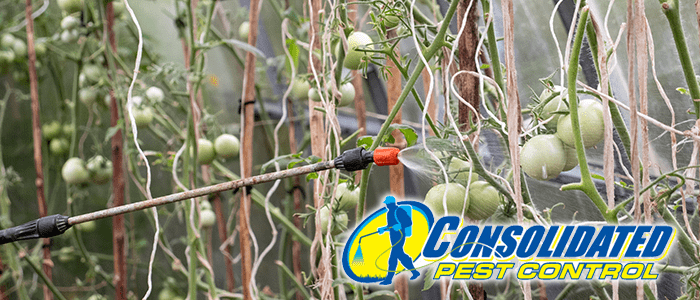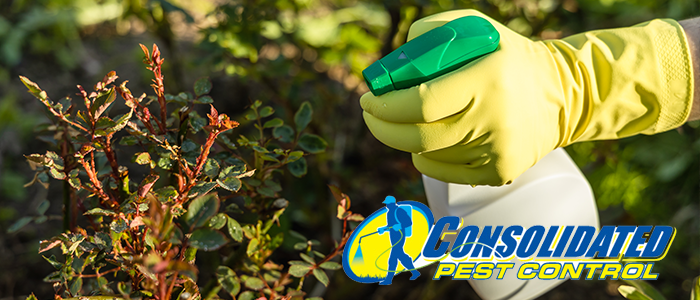
Green Alternatives: Benefits for Your Business and the Environment
As a Florida business owner, you understand the importance of pest control. Pests like cockroaches, rodents, mosquitoes, and termites can wreak havoc on your property, causing damage, health hazards, and lost revenue. Additionally, traditional pest control methods that use harsh chemicals can harm the environment and put people and pets at risk. So, why not green alternatives to pest control?
But what if we told you there’s a better way? At Consolidated Pest Control, we’re proud to offer services that protect your business, your community, and the planet. Here’s why you should choose this safer alternative and how it can benefit your business and the environment.
Section 1: What is Green Pest Control?
Green pest control, also called Integrated Pest Management (IPM), is an eco-friendly and sustainable approach to pest control that prioritizes prevention and non-toxic treatments. Instead of relying on pesticides that can harm beneficial insects, pollute waterways, and promote pesticide resistance, green pest control focuses on identifying and eliminating the root causes of pest problems. This includes sealing entry points, reducing moisture, removing food sources, using pheromone traps, and more.
When pest control products are necessary, green pest control companies use low-toxicity and natural products, such as essential oils, botanical extracts, and beneficial nematodes.
Compared to traditional pest control methods, green pest control is more holistic, long-term, and effective. By targeting the underlying conditions that attract pests, it reduces the need for repeated treatments and helps to prevent future infestations.
Additionally, green pest control can save you money in the long run by lowering your energy bills, reducing property damage, and avoiding fines from environmental regulators.
Section 2: Benefits for Your Business with Green Alternatives
Choosing green pest control for your business has several advantages, including:
- Enhanced reputation: Customers and employees appreciate businesses that care about their health and the environment. By choosing green pest control, you can differentiate your business from competitors and build trust with your stakeholders.
- Increased safety: Traditional pesticides can pose risks to workers, customers, and wildlife. Green pest control uses non-toxic and low-risk products, reducing the chances of accidents, illnesses, and environmental damage.
- Better pest control: By addressing the underlying causes of pest problems, green pest control is often more effective than traditional methods. This means fewer pests, less damage, and a healthier workplace.
- Compliance with regulations: Many states and municipalities have strict regulations on the use of pesticides, especially indoors or near bodies of water. Green pest control allows you to stay compliant while still protecting your property from pests.
- Better energy efficiency: Pests can damage insulation, ductwork, and electrical systems, leading to higher energy bills. By preventing pest infestations, green pest control can improve your building’s energy efficiency and save you money on utilities.
Section 3: Benefits for the Environment
Green pest control is also beneficial for the environment and the community you serve. Here are some ways it helps:
- Reduced chemical exposure: Traditional pesticides can contaminate food, water, and air, posing risks to human health and wildlife. Green pest control uses eco-friendly and non-toxic products, minimizing the impact on the environment.
- Preservation of ecosystems: Pesticides can harm non-targeted insects, such as pollinators and beneficial predators, as well as disrupt food chains and ecological balances. Green pest control aims to preserve biodiversity and support a healthy ecosystem.
- Conservation of resources: By using preventive measures and non-toxic treatments, green pest control reduces the use of resources such as water, energy, and materials. This contributes to a more sustainable and resilient future.
- Reduction of waste: Traditional pest control often involves excess packaging, disposable products, and hazardous waste. Green pest control strives to minimize waste and promote recycling and composting.
Section 4: Green Pest Control Services at Consolidated Pest Control
At Consolidated Pest Control, we are committed to providing eco-friendly and effective pest control solutions. Our green pest control services include:
- Inspections: We conduct thorough inspections of your property to identify pest entry points, harborage areas, and conducive conditions. We also assess your building’s energy efficiency and recommend improvements.
- Exclusions: We seal off gaps, cracks, and openings in your building’s structure and foundation that allow pests to enter. We also install door sweeps, window screens, and other physical barriers.
- Sanitation: We advise you on proper waste management, food storage, cleaning practices, and water management to reduce pest attractants and prevent pest infestations.
- Monitoring: We use pheromone traps, sticky traps, and other monitoring tools to detect pest activity and track its progress. This allows us to adjust our treatments and preventive measures accordingly.
- Treatments: When necessary, we use low-toxicity and natural products to eliminate pests, such as botanical insecticides, microbial agents, and biological controls. We also use baits and traps that target specific pests without affecting other organisms.
- Recommendations: We provide you with ongoing recommendations and education on how to prevent pest infestations, improve your building’s energy efficiency, and promote sustainability.
Section 5: The Importance of Preventive Measures
One of the key principles of green pest control is prevention. Instead of waiting for pests to become a problem, green pest control focuses on preventing them from entering and establishing themselves in the first place. This not only reduces the need for pesticide use but also saves you time and money on pest control services. Preventive pest control includes:
- Regular inspections: By inspecting your property regularly, you can detect pest problems early and address them before they become severe. This includes checking for signs of pest activity, water leaks, and other conditions that attract pests.
- Exclusions: By sealing off entry points and creating physical barriers, you can prevent pests from entering your building or property. This includes caulking gaps, installing screens, and weatherstripping doors.
- Sanitation: By maintaining a clean and hygienic environment, you can reduce the availability of food, water, and shelter for pests. This includes storing food in sealed containers, disposing of waste properly, and fixing leaky faucets.
- Monitoring: By tracking pest activity over time, you can adjust your preventive measures and treatments accordingly. This includes using pheromone traps, monitoring devices, and visual inspections.
Section 6: The Risks of Traditional Methods
While traditional pest control methods can be effective at eliminating pests, they also come with several risks and drawbacks. Some of the risks of traditional pest control include:
- Health risks: Traditional pesticides can be harmful to humans, pets, and wildlife, especially when applied improperly or in high doses. This can result in skin irritation, respiratory problems, neurological damage, and even cancer.
- Environmental risks: Traditional pesticides can harm the environment by contaminating water, soil, and air, as well as killing non-targeted species. This can lead to ecological imbalances, reduced biodiversity, and long-term impacts on public health.
- Resistance risks: Over time, pests can develop resistance to traditional pesticides, making them harder to control and requiring higher doses or more frequent treatments. This can result in greater exposure to pesticides and higher costs for pest control services.
- Economic risks: Traditional pest control methods can be expensive, especially when they require repeated applications or property damage repairs. Additionally, fines for environmental violations can add up quickly and hurt your business’s reputation.
Section 7: Choosing Green Pest Control for Your Business
Choosing green pest control for your business is a smart and responsible choice. Here are some tips for choosing a green pest control provider:
- Look for eco-certifications: A reputable green pest control company will have eco-certifications or affiliations that demonstrate their commitment to sustainability and environmental stewardship. Look for certifications such as GreenPro or Green Shield Certified.
- Ask about their methods: A green pest control provider should be transparent about their methods and products, and willing to explain how they work and their safety profile. Ask if they use non-toxic and low-risk products, pheromone traps, and other green pest control methods.
- Check their reputation: A trustworthy green pest control company will have satisfied customers and positive reviews. Check online reviews, testimonials, and referrals from other businesses in your industry.
- Compare prices and services: While green pest control methods are often more cost-effective in the long run, you should still compare prices and services from different providers. Look for transparency in pricing and no hidden fees or charges.
- Get a written agreement: Make sure that all services, methods, and guarantees are listed in a written agreement, and that you understand the terms and conditions. A trustworthy green pest control provider will honor their promises and work with you to maintain a pest-free environment.
Section 8: How It Benefits Your Community to use Green Alternatives
By choosing green alternatives for your business, you’re not only protecting your property and reputation but also contributing to a healthier and more sustainable community. Here are some ways green pest control benefits your community:
- Reduced pollution: By using low-toxicity and natural products, green pest control reduces the amount of pesticides and chemicals that enter the soil, water, and air. This benefits not only your immediate surroundings but also neighboring communities and ecosystems.
- Promoting biodiversity: By preserving beneficial insects and pollinators, green pest control supports a healthy and thriving ecosystem, boosting the resilience of your community against climate change, habitat loss, and other environmental challenges.
- Supporting local businesses: By choosing a local green pest control provider, you’re supporting the local economy and promoting sustainability in your community. Additionally, local providers may have a better understanding of your local pest challenges and ecological conditions.
- Educating others: By setting an example of responsible and eco-friendly pest control, you’re educating others in your community, including customers, employees, and peers. This can lead to a positive change in attitudes and behaviors toward sustainability.
Section 9: The Future of Green Alternatives
As the world becomes more aware of environmental issues and the importance of sustainability, green alternatives will become increasingly important and widespread. At Consolidated Pest Control, we’re dedicated to staying on the cutting edge of green pest control technology and techniques. We strive to provide our customers with the most effective and eco-friendly solutions, while also contributing to a healthier and more resilient environment.
By choosing us as your green pest control provider, you’ll enjoy the benefits of a pest-free and sustainable workplace, while also promoting a brighter future for generations to come.








